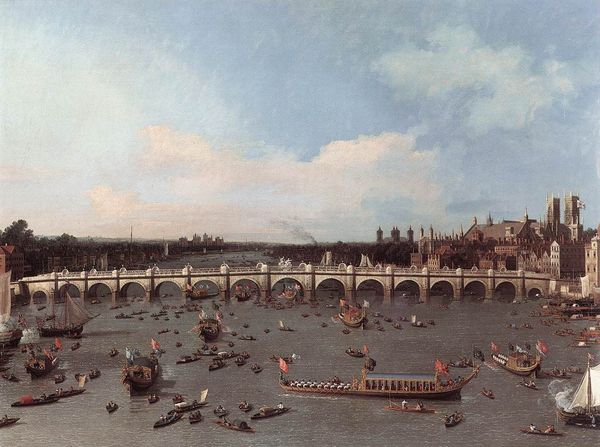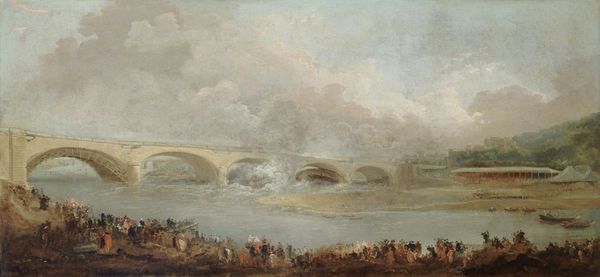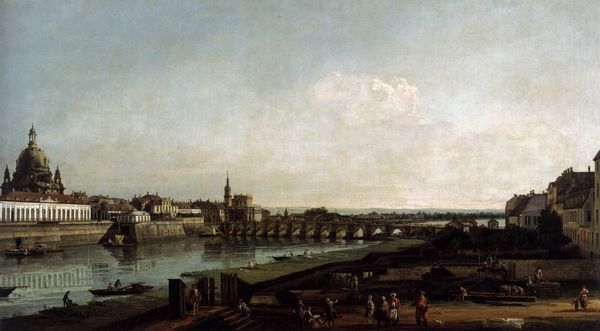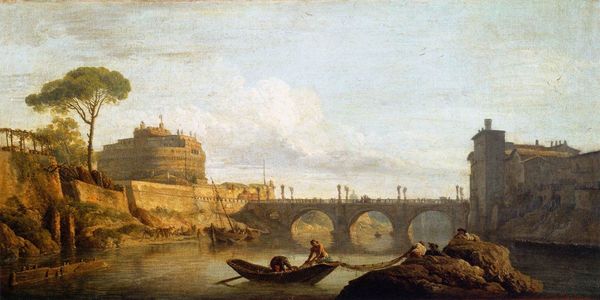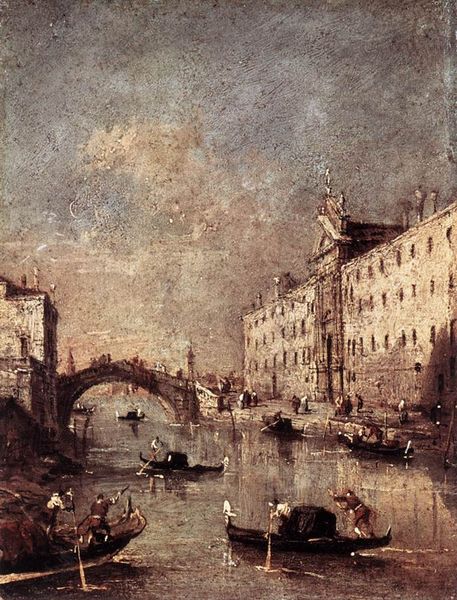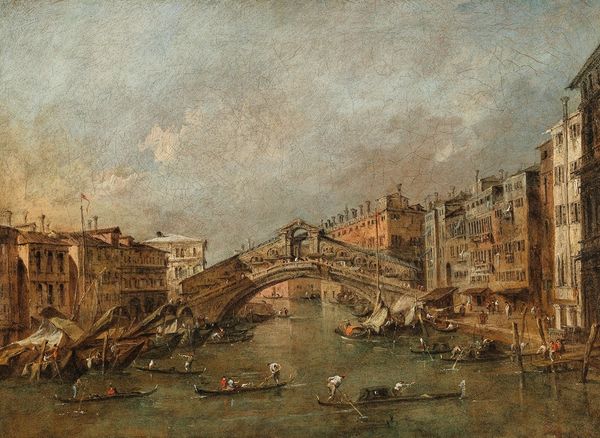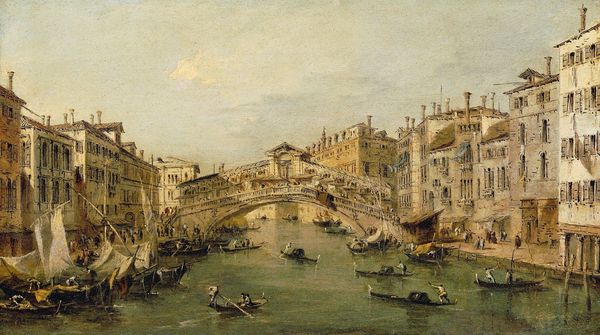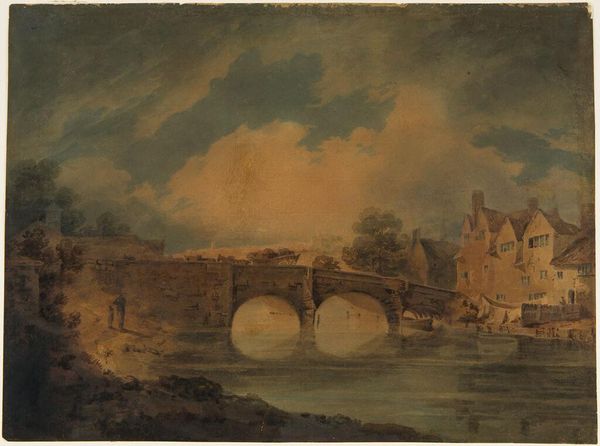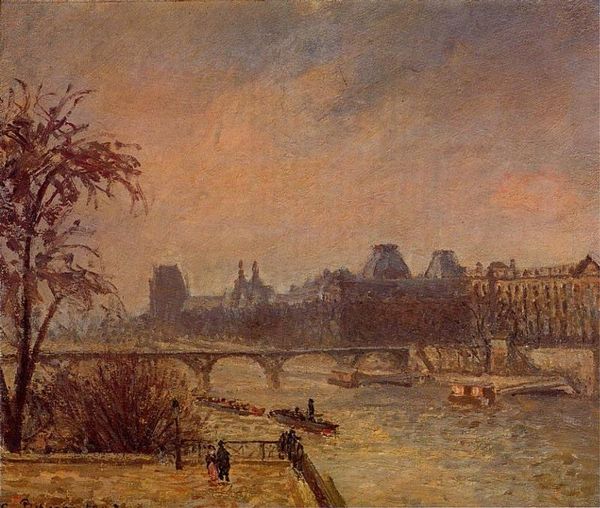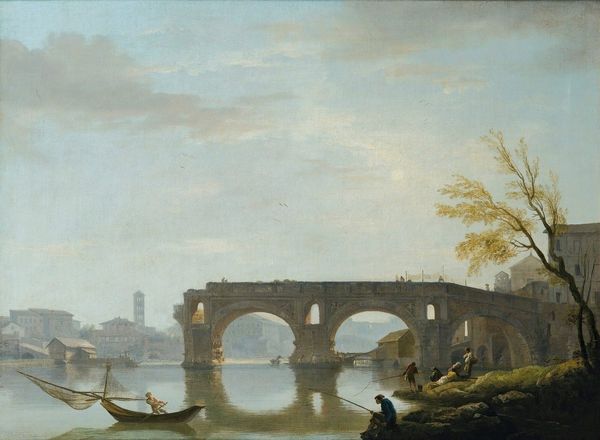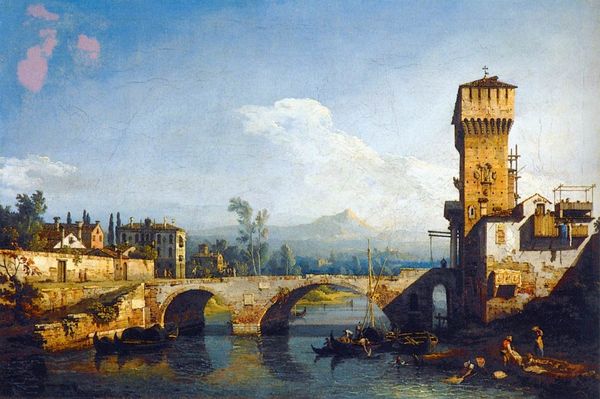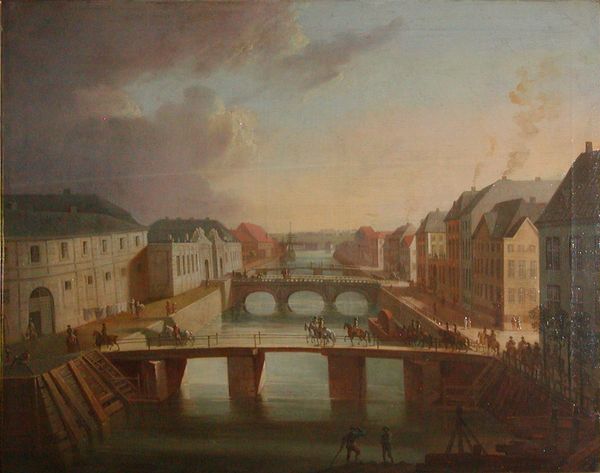
Dimensions: 73 x 140 cm
Copyright: Public domain
Curator: Looking at this painting, I immediately feel a strange mix of destruction and calm. It's like watching a controlled implosion—simultaneously unsettling and peaceful. Editor: That’s an interesting way to put it! We're looking at "Demolition of the Houses on the Pont Notre-Dame in 1786," an oil on canvas work by Hubert Robert. He captured a moment of significant urban change in Paris. It resides at the Carnavalet Museum. Curator: The Carnavalet! Of course, devoted to the history of Paris. I see it now, it’s not just any demolition; it's a piece of Paris being reimagined. Even in the face of apparent ruin, the composition feels meticulously balanced, doesn’t it? Almost romantic. Editor: Precisely! Robert was known for his romantic depictions of ruins, and here, even as houses are torn down, there’s a certain picturesque quality. He’s really playing with the spectacle of urban transformation. The demolition of these houses wasn't merely practical, but also symbolic, as the bridge was considered a bit of an eyesore at the time. A change towards a modern city! Curator: It's fascinating how he frames it—the bridge as this central artery, almost serene despite the chaos on top. I can imagine the energy and noise on that bridge as these houses come down and how strange to see it represented so elegantly and yet quite bleak. Editor: Indeed. The houses were removed to improve hygiene, traffic flow, and the overall aesthetics of the city. This event reflects the 18th-century drive toward urban improvement and modernization, a key moment in Parisian history—very picturesque but a means to a monumental change. Curator: There's something poetic about it too, seeing progress portrayed through an act of deconstruction. We're reminded that even destruction can be beautiful, in a strange, melancholic way. Editor: Yes, Robert captured not just a demolition, but a shift in how Paris saw itself, moving towards a more planned and idealized urban space. And even though it depicts physical destruction, it memorializes an optimistic, forward-looking moment for the city. Curator: It leaves me wondering what other hidden moments of beauty and transition are happening around us every single day, right under our noses. Editor: And perhaps that's the power of art like this—to make us pause, observe, and find beauty in the unexpected places.
Comments
No comments
Be the first to comment and join the conversation on the ultimate creative platform.
